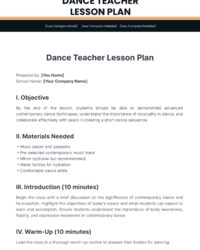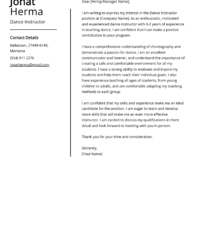Teaching can often feel like an intricate dance, balancing curriculum demands, diverse student needs, and the constant push to foster genuine understanding. Crafting lesson plans that are both effective and engaging is a challenge many educators face daily. It requires foresight, adaptability, and a deep understanding of how students learn best.
That’s where structured frameworks come into play, offering a guiding hand to transform complex learning objectives into clear, actionable steps. One such powerful approach, widely embraced for its ability to promote deep mathematical understanding and student-centered learning, is the "5 Practices" framework. It’s designed to help teachers orchestrate productive classroom discussions, ensuring every student has the chance to explore, explain, and connect mathematical ideas.
Unlocking Deeper Learning with the 5 Practices Framework
The 5 Practices for orchestrating productive mathematical discussions, as outlined by Margaret S. Smith and Mary Kay Stein, offers a robust pedagogical framework. It moves beyond simply presenting information to actively engaging students in mathematical thinking and discourse. This approach empowers teachers to anticipate student responses, monitor their progress, select key examples, sequence student work, and connect different ideas, fostering a richer learning environment. It’s about being proactive in lesson design rather than reactive during instruction, preparing educators to guide students through challenging concepts with greater ease and effectiveness.
At its heart, the 5 Practices framework encourages teachers to think critically about potential student pathways and misconceptions even before the lesson begins. This anticipatory planning ensures that when students encounter difficulties or surprising solutions, the teacher is well-equipped to leverage those moments for learning. It transforms potential obstacles into opportunities for growth and deeper conceptual understanding. The framework provides a clear pathway for teachers to move from merely observing student work to actively shaping the intellectual landscape of the classroom.
Anticipating and Monitoring Student Thinking
The journey begins with Anticipating. This involves predicting what student responses might look like, both correct and incorrect, and understanding the reasoning behind them. It also means thinking about different strategies students might employ to solve a problem. Teachers consider potential misconceptions and plan how to address them effectively. This proactive step is crucial for preparing to guide discussions rather than just reacting to them. Following anticipation, Monitoring is about actively observing students as they work. It’s about circulating the classroom, listening to discussions, and noting the different approaches students are taking. This real-time assessment allows teachers to identify which students are on track, who might need support, and which unique solutions or common errors will be valuable to share with the whole class later.
Selecting, Sequencing, and Connecting Ideas
Once students have engaged with the task, the teacher moves to Selecting specific student work to share with the entire class. The selection isn’t random; it’s purposeful, chosen because it represents a particular strategy, an important misconception, or a path towards a key concept. The selected work is then carefully Sequenced. This means determining the order in which the student solutions will be presented to the class. Often, it moves from simpler or more common strategies to more sophisticated or abstract ones, building a conceptual ladder for students to climb together. Finally, Connecting is where the real power of the framework shines. The teacher facilitates a whole-class discussion, guiding students to draw connections between the different solutions presented. This step helps students articulate their reasoning, compare strategies, and generalize their understanding, thereby solidifying the mathematical concepts being explored.
Designing Your Instruction with a 5 Practices Lesson Plan Template
Utilizing a 5 practices lesson plan template fundamentally shifts how educators prepare for their classes. Instead of just listing activities, the template guides you through a thoughtful process of considering student thinking at every stage. It encourages a proactive stance, where you’re not just delivering content but orchestrating a dynamic learning experience where students are active participants in constructing their own knowledge. This structured approach ensures that every lesson is not only well-organized but also deeply rooted in pedagogical principles that promote genuine understanding and engagement.
The beauty of such a template lies in its ability to systematize the framework’s principles, making them accessible and actionable for everyday planning. It helps teachers internalize the process of anticipating potential student responses and planning for meaningful classroom discourse. This deep preparation allows for more fluid and responsive teaching, where the teacher can skillfully navigate the complexities of student inquiry and challenge, transforming them into powerful learning opportunities for everyone involved.
For instance, a well-designed 5 practices lesson plan template might include dedicated sections for:
- Learning Objectives: What specific understanding or skill should students achieve?
- Task Selection: The mathematical problem or task students will engage with.
- Anticipated Student Responses: Common correct strategies, partial solutions, and potential misconceptions.
- Teacher Questions and Prompts: Questions to guide students during monitoring and discussions.
- Key Solutions to Select: Which student work samples will be highlighted?
- Sequencing Order: The logical progression for presenting student work.
- Connecting Questions: Prompts to link different student solutions to the core concept.
- Summary of Key Ideas: What essential understanding should students walk away with?
Embracing this framework through a detailed template ensures that your lessons are not just taught, but expertly facilitated. It allows for the creation of rich, student-driven learning environments where mathematical ideas are explored, debated, and deeply understood. By systematically planning for student interaction and conceptual growth, educators can transform their classrooms into vibrant hubs of discovery. This leads to lessons that are not only more effective but also incredibly rewarding for both teachers and students, fostering a lasting appreciation for learning.


